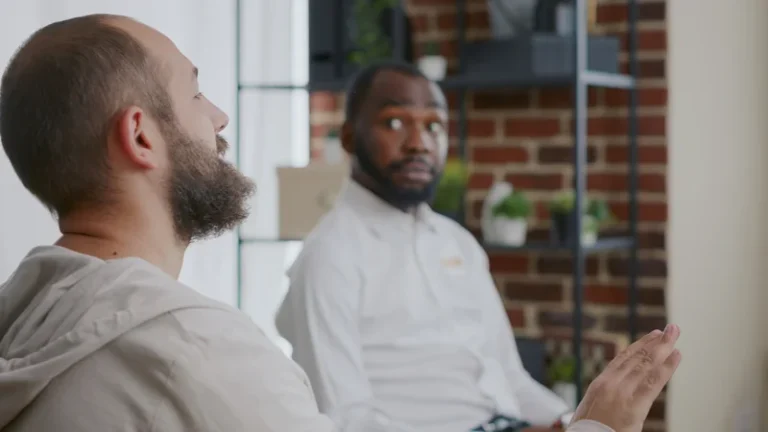
According to the Family and Medical Leave Act, nearly everyone is entitled to up to 12 weeks of medical leave, which means your job will be protected during your stay in treatment. For most, being open and honest about entering rehab with their employer is one of the toughest challenges. Most employers do not need to know the specific needs for entering a treatment center, though honesty is often a powerful tool in recovery that you may find helpful to utilize in these scenarios. In the end, most employers simply want the healthiest, happiest, and best version of their employee. Another crucial aspect of rehabilitation is the opportunity to build a supportive network of peers who understand your struggles. The friendships and connections formed in rehab can be instrumental in your recovery journey.
Making The Decision To Go Back To Rehab
- It can be difficult to properly address the psychological side of addiction without help from a behavioral health professional.
- Once you begin this stage of relapse, the physical act of relapsing is not far away.
- It’s easy to become complacent and rely on repetition for recovery.
- A success plan or action plan for your recovery can be a great tool to help you embrace a successful new lifestyle.
Rehab can provide treatment programs to offer the skills, techniques, and guidance to stop using drugs or alcohol successfully. It is important to find a support group of some kind, whether going back to rehab it is based on the 12-Step model or not. Self-Management and Recovery Training (SMART) is one of the most popular alternatives to 12-step groups. SMART is based on research-proven methods for recovery and teaches people that they can take control of their addiction.
Is My Addiction Bad Enough?

Returning to treatment with an open-mind provides the opportunity to try a new approach for sustaining recovery. Consider the benefits of a new environment vs. challenges like distance from support and added costs. It’s best to enroll in an inpatient care plan if you don’t have a stable home environment or believe you can’t stop the loop of relapse on your own.
Take Time To Relax
- Outpatient treatment may be needed to end the recurrence pattern if the patient comes from a supportive family and has a stable living situation at home.
- Sticking to the essentials will also minimize any outside distractions that can interfere with your recovery process.
- The 12-Step method relies on admitting powerlessness and relying on a higher power.
- You most likely need to return to treatment if you’re debating it.
- Some addicts slip and immediately get right back into a meeting and begin the process of recovery anew.
- We’re here 24/7 to help guide you or your loved on through rehab and recovery.
Most people drift when they don’t have a set course of action. A success plan or action plan for your recovery can be a great tool to help you embrace a successful new lifestyle. When you feel your commitment to recovery waning, or you think you’re “cured” and don’t need to continue with your plan, that’s a giant warning sign that you’re heading down the wrong path.
Individuals work with therapists to uncover distressing withdrawal symptoms or behaviors. Individual counseling serves a similar purpose, allowing patients to delve deep and uncover why they have certain emotions, or use substances to cope. This is powerful, as patients are connecting with different treatment methods.

- Rehab gives you the tools you need to reduce the risk of relapse.
- Inpatient care may be the best option if you have waited more than a year since your previous treatment.
- Being prepared can help to ensure that you get the most out of your treatment experience and come out equipped with the tools to stay healthy and sober in recovery.
- There are even colonies or communities set up as sober villages or houses where all of the residents are former addicts.
- Recovery can travel both ways – up to sobriety or down to relapse.
Relapse isn’t inevitable, but it is something to watch out for. Like caution or danger signs on the highway, triggers are things that can precipitate a relapse. Recognizing both the signs of a stale program of recovery and potential relapse triggers helps you avoid them and maintain sobriety. To keep your recovery on solid footing, you need a positive mental outlook, a strong plan of recovery, and a commitment to keeping your program fresh and vital, one day at a time.
Preventing Future Relapse
You may feel hopeful about your new life after completing your first 30, 60 or 90 days in recovery. Suddenly, life without drugs and alcohol not only seems possible, but like it might be fun, too. Regardless of how you define these terms, a slip increases the risk of a complete relapse. The best way to avoid a relapse is to attend an addiction treatment program. A relapse is sometimes referred to as a lapse, slip, or slip-up. In most cases, a slip refers to a one-time return to alcohol or drug use.


Unfortunately, not going into rehab can negatively affect your life. You may be unable to work, provide for your family, or study properly. Initially, using substances can lead to powerful effects with small doses because your body isn’t accustomed to them.

Bir Yorum Yazın